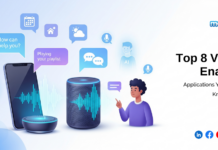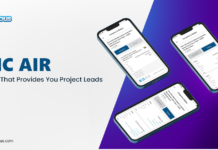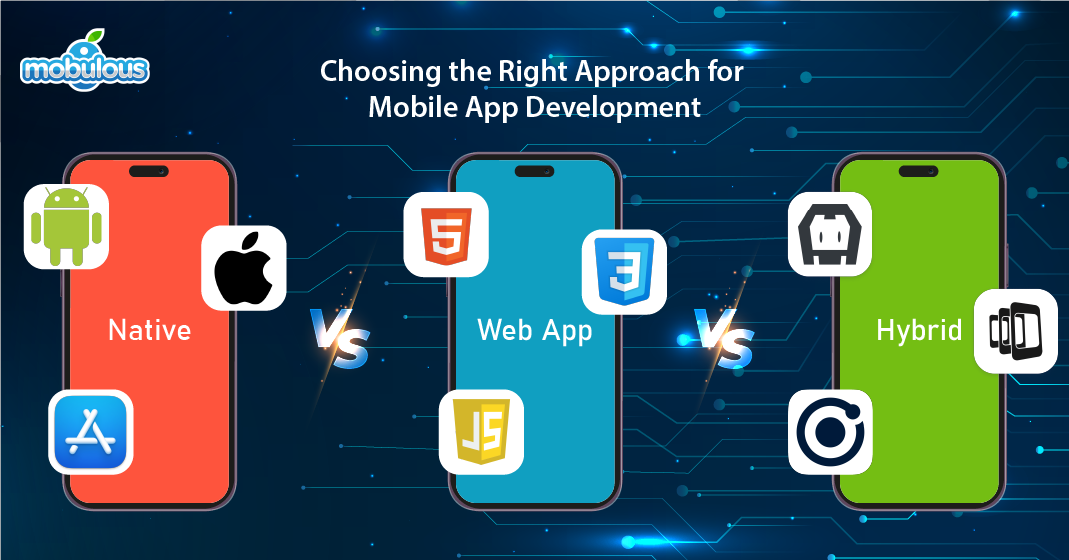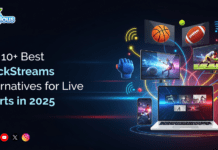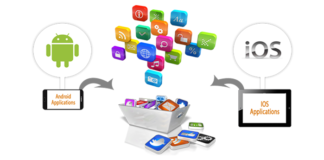Native vs. Hybrid vs. Web Apps: Choosing the Right Approach for Mobile App Development
Native vs. hybrid vs. web apps — these three app development methodologies represent the primary choices for every mobile app project. In today’s mobile-first world, selecting the right application development methodology for your application can substantially affect its success.
Each of these mobile application development approaches offers exceptional advantages and compromises that can shape your app’s user experience, performance, and development timeline.
Now, the question arises, should you go with native, hybrid, or web apps? Each approach has its strengths and weaknesses, and the right choice depends on your goals and budget. Let’s explore everything about native vs. hybrid vs. web apps to help you make an informed decision!
What is Native App Development?
Native app development involves creating apps specifically for a single platform, i.e., for iOS and Android by using platform-specific programming languages and tools.
For iOS app development, developers leverage Swift or Objective-C, whereas Android app development is done with Java or Kotlin programming languages.
These native apps are designed specifically to work directly with the operating system of the device and can fully access all hardware features that lead to optimized performance and a seamless user experience, following platform-specific design guidelines.
For Query:- Seek Guidance From a Native Mobile App Development Company!
Pros of Native App Development
Before diving into specific advantages, it is necessary to understand why numerous companies select native app development despite its highest initial investment. Isn’t it? Let’s move ahead and learn the key benefits of native application development:
1. Superior Performance and Speed
Native apps are generally created for the platform’s software and hardware architecture that enables optimal resource utilization and faster execution speeds.
This direct communication between the application and the operating system eradicates additional processing layers that lead to seamless animations, better overall responsiveness, and quicker load times.
2. Enhanced User Experience
Native apps adhere to platform-specific UI/UX guidelines and create an intuitive experience that matches users’ expectations.
They can utilize built-in features like haptic feedback, gesture recognition, and platform-specific navigation patterns. This familiarity makes users feel more comfortable and reduces the learning curve significantly.
3. Full Hardware and Feature Access
Native app development provides unrestricted access to device potentials and capabilities such as GPS, camera, biometric sensors, and accelerometer.
This direct hardware access allows for complex features and functionalities like advanced animations, augmented reality, and complex security measures that might be limited or unavailable in other application development methodologies.
4. Better Security and Protection
Native applications can enforce platform-specific security features and encryption protocols more efficiently.
They can leverage secure storage options, built-in security features, and keychain services of the operating system. This robust security framework provides better protection for confidential user data.
5. Offline Functionality
Native apps can function fully without an internet connection by storing data locally and synchronizing when connectivity is restored.
This capability enables users to access core features and content even in areas with poor network coverage and guarantees consistent usability regardless of any connection status.
Cons of Native App Development
While native app development offers various benefits, it also comes with numerous challenges and disadvantages. This includes higher development costs, longer development time, platform-specific skills, update complexity, resource-intensive maintenance, etc. Let’s discuss them in a detailed way:
1. Higher Development Costs
Developing separate apps for iOS and Android requires two different codebases and highly skilled native app development teams for each platform.
This dual application development methodology substantially increases initial investment, and the overall project budget makes it particularly challenging for smaller firms and startups.
2. Longer Development Time
Creating and maintaining separate codebases for different platforms extends the application development timeline considerably.
Each feature and functionality must be enforced twice, and updates need to be rolled out individually. This longer app development cycle can delay market entry and slow down the iteration process.
3. Platform-Specific Skills Required
Finding native app developers with expertise in both Android and iOS app development can be challenging and expensive.
Every platform needs various programming languages, design patterns, and app development tools. This specialization usually necessitates hiring separate teams, elevating organizational complexity.
4. Update Complexity
Maintaining version consistency across platforms becomes more challenging with separate codebases. Each update must be enforced, tested, and deployed at least two times.
This must be followed by different app store guidelines and approval processes. This can lead to version fragmentation and inconsistent user experiences.
5. Resource-Intensive Maintenance
Supporting different codebases needs more resources for feature updates, bug fixes, and platform-specific optimizations.
Teams must stay updated with two different ecosystems such as new OS versions, best practices, and design guidelines, thus increasing the overall maintenance burden.
What is Hybrid App Development?
Hybrid app development incorporates components of both web and native apps that enable app developers to compile code once and deploy it across different platforms.
These applications are created with the help of web technologies like CSS, HTML, and JavaScript, wrapped in a native container by leveraging frameworks like Flutter, React Native, or Ionic.
This methodology allows applications to access device features through native APIs while maintaining a single codebase. This offers a balance between app development efficiency and native functionality.
For Query:- Seek Guidance From a Hybrid App Development Company!
Pros of Hybrid App Development
Hybrid app development has gained significant popularity for its potential to balance development efficiency with functionality. The crucial benefits that make hybrid app development a suitable choice are given below:
1. Cost-Effective Development
Leveraging a single codebase for different platforms substantially reduces the cost of app development and maintenance.
Instead of creating individual native applications, hybrid app developers can compile code once and deploy it everywhere. This methodology needs fewer developers and resources which makes it particularly attractive for businesses with budget constraints.
2. Faster Time-to-Market
Hybrid app development accelerates the application development process by eradicating the requirement for platform-specific coding.
Hybrid app development experts can simultaneously create apps for different platforms, simplifying the release cycle. This faster app deployment capability enables businesses to test responses and iterate quickly as per their user feedback.
3. Easier Maintenance and Updates
With a shared codebase, bug fixes, and updates can be enforced once and automatically reflected across all platforms.
This simplified maintenance process reduces the complexity of handling different versions and ensures consistency across diverse devices, saving time and resources.
4. Cross-Platform Consistency
Hybrid app development maintains consistent user experience across different platforms, as they share the same codebase.
This uniformity assists you in setting up a robust brand identity and reduces user confusion when switching between devices. Updates and the latest features are rolled out simultaneously, guaranteeing all users have access to the latest version.
For Query:- Seek Help From a Cross-Platform App Development Company!
5. Broad Market Reach
Hybrid applications can target different platforms simultaneously, maximizing possible user reach without additional application development efforts.
This broad accessibility enables businesses to capture a larger market share promptly and effectively, making it seamless to scale operations across diverse regions and user segments.
Cons of Hybrid App Development
With so many advantages in the line, there are various disadvantages of hybrid application development as well. The key drawbacks that you must consider before selecting this methodology are as follows:
1. Performance Limitations
Hybrid apps generally perform slower than native applications due to the additional layer between the code and the platform.
Heavy computations, complex animations, or intensive graphics processing may experience stuttering and lag that potentially affect user experience in performance-centric apps.
2. Limited Access to Native Features
While hybrid frameworks provide access to device features, they may lag behind in terms of supporting the latest platform capabilities.
Some complex yet advanced or platform-specific features might be unavailable or need robust workarounds, limiting the app’s functionality as compared to native solutions.
3. Platform-Specific Design Challenges
Developing a consistent user experience that also respects platform-specific design guidelines can be challenging.
Applications may feel less native to each platform, as they usually compromise between Android and iOS design patterns, possibly impacting user satisfaction.
4. Dependency on Framework Updates
Hybrid applications depend solely on their application development frameworks which makes them vulnerable to framework-related issues.
When platforms release the latest features or updates, hybrid app developers need to wait for framework updates before enforcing them, possibly delaying access to the latest capabilities.
5. Debug and Testing Complexity
Debugging hybrid applications can be more complicated because of the additional abstraction layer in the application.
Issues may stem from the framework, their interaction, and platform-specific implementations that make it harder to identify and resolve bugs compared to native app development.
What is Web App Development?
Web app development creates apps that run in web browsers, accessible through URLs rather than App Stores. These applications are created by using standard web technologies like CSS, HTML5, and JavaScript which make them platform-independent and quickly accessible.
Unlike hybrid or native app development, web application development doesn’t need installation and automatically updates when users refresh their browsers.
They function as responsive websites optimized for mobile devices, thus offering app-like functionality through modern web capabilities.
For Query:- Seek Help From a Web Application Development Company!
Pros of Web App Development
Web applications offer exceptional benefits that make them an attractive option for numerous businesses and enterprises, specifically those prioritizing accessibility and quick app deployment. The pros of web app development are mentioned below comprehensively:
1. Universal Accessibility
Web applications are quickly accessible on any device with a web browser, eradicating the need for platform-specific installations.
Users can access the app quickly without downloading from app stores, reducing friction in user acquisition and making it seamless to reach a global audience.
2. Instant Updates and Maintenance
Updates can be deployed instantly across all users by updating the server-side code. There is no need to wait for app store approvals or user installations.
This frequent deployment capability ensures all users always have access to the latest version which reduces version fragmentation.
3. Cost-Effective Development
Developing a single web app that works across all platforms substantially reduces the cost of app development and maintenance.
Web app development teams need to maintain only one codebase and there isn’t any need for platform-specific expertise. This methodology needs fewer resources and enables faster iteration cycles.
4. No App Store Requirements
Web applications bypass app store guidelines, fees, and approval processes. This freedom enables more flexible development and monetization strategies.
Updates can be pushed without waiting for review, and businesses can avoid revenue-sharing with app store platforms.
5. SEO Benefits
Web apps can be indexed by search engines, enhancing visibility and organic traffic. Content can be optimized for search engines, assisting businesses attract users through regular web searches.
This SEO advantage provides additional marketing opportunities not available to native apps.
Cons of Web App Development
While web app development offers significant benefits, it also consists of certain limitations and disadvantages that may affect their suitability for certain projects. The crucial drawbacks of web application development are as follows:
1. Limited Device Features
Web applications have restricted access to device features and hardware when compared with native apps.
While modern web APIs provide some access to camera, storage, and location, many advanced device capabilities remain unavailable or limited, possibly constraining app functionality.
2. Performance Constraints
Web apps usually perform slower than native apps, especially for complex operations or graphics-intensive tasks.
Being browser-dependent, they are impacted by internet connectivity and browser performance. This can result in slower load times and less seamless user experiences.
3. Internet Dependency
A majority of web apps require constant internet connectivity to help these apps function properly and efficiently.
While some offline potentialities exist through Progressive Web Apps (PWAs), they are generally more limited than native apps. Poor internet connections can substantially affect user experience and functionality.
4. Browser Compatibility Issues
Distinct browsers and functions may affect web applications distinctively or support diverse features seamlessly and hassle-free.
Web app developers must ensure compatibility across diverse browsers and versions, thus increasing development complexity and potentially limiting the usage of advanced features.
5. Less Integrated User Experience
Web applications cannot replicate the native application experience fully in terms of interface and interaction patterns.
Users may find them less intuitive as compared to native apps, and they lack deep interaction with platform-specific features and design guidelines.
Differences: Native vs. Hybrid vs. Web Apps
Understanding the different characteristics of each development approach, i.e., native vs. hybrid vs. web apps can help you a lot in making an informed decision.
Let’s have a detailed comparison highlighting the key differences between native, hybrid, and web apps. Below are the key differences among these approaches:
| Feature | Native Apps | Hybrid Apps | Web Apps |
| Development Language | 1. Built using platform-specific languages like Swift or Kotlin, enabling deep integration with the OS and optimal performance.
2. Requires separate codebases for each platform but offers maximum control and capabilities. |
1. Uses web technologies (HTML, CSS, JavaScript) wrapped in native containers using frameworks like React Native or Flutter.
2. A single codebase can target multiple platforms through native wrappers. |
1. Developed using standard web technologies and frameworks, making them accessible through browsers.
2. Focus on responsive design and progressive enhancement for mobile optimization. |
| Development Cost | 1. The highest cost is due to separate development teams and codebases for each platform.
2. Requires platform-specific expertise and longer development cycles. 3. Maintenance costs are also higher with multiple codebases. |
1. Moderate cost as a single codebase serves multiple platforms.
2. Requires fewer developers but needs expertise in hybrid frameworks. 3. Maintenance is simpler but may need platform-specific fixes. |
1. Lowest development cost with a single codebase serving all platforms.
2. Web developers are generally more available and cost-effective. 3. Maintenance is centralized and updates are instant. |
| Performance | 1. Excellent performance with direct access to device hardware and OS features.
2. Smooth animations, fast processing, and efficient resource usage. 3. Best choice for graphics-intensive or complex applications. |
1. Good performance for most applications but may lag behind native in complex scenarios.
2. Additional wrapper layer can impact speed and resource usage. 3. Suitable for moderate performance requirements. |
1. Moderate performance dependent on browser capabilities and internet connection.
2. May struggle with complex animations or heavy processing. 3. Best suited for content-focused applications. |
| Device Feature Access | 1. Complete access to all device features including camera, GPS, sensors, and platform-specific capabilities.
2. Can leverage the latest OS features and hardware innovations immediately. |
1. Access to device features through plugins and native bridges.
2. May have delays in supporting new OS features. 3. Some advanced features may require custom native modules. |
1. Limited access to device features through web APIs.
2. Growing capabilities with Progressive Web Apps but still restricted compared to native access. 3. Some features may be browser-dependent. |
| Development Time | 1. Longest development cycle due to separate implementations for each platform.
2. Updates and features need platform-specific development and testing. 3. The app store approval process adds additional time. |
1. Moderate development time with a single codebase serving multiple platforms.
2. Some platform-specific customization is still needed. 3. Faster than native but slower than web apps. |
1. Shortest development time with immediate deployment capabilities.
2. No app store approval is needed. 3. Updates are instant and universal across all platforms. |
| Installation Process | 1. Requires download and installation through platform app stores.
2. Takes up device storage and needs manual updates. 3. Users must actively choose to install. |
1. Requires app store download and installation like native apps.
2. Generally smaller size than native due to shared codebase. 3. Still needs manual updates. |
1. No installation required. Instantly accessible through web browsers.
2. Can be added to the home screen as PWA. 3. Updates are automatic and instant. |
| Distribution | 1. Must comply with app store guidelines and approval processes.
2. Provides visibility through store listings but requires revenue sharing. 3. Long update cycles. |
1. Distributed through app stores like native apps.
2. Subject to the same guidelines and revenue sharing. 3. Updates still need store approval. |
1. Direct access through URLs.
2. No app store requirements or restrictions. 3. Complete control over distribution and monetization. 4. Instant updates possible. |
| Maintenance | 1. Complex maintenance with multiple codebases.
2. Platform-specific bug fixes and updates needed. 3. Requires ongoing expertise in multiple platforms. |
1. Simplified maintenance with a single codebase.
2. May still need platform-specific fixes. 3. Framework updates and compatibility issues need attention. |
1. Easiest maintenance with centralized updates.
2. No version fragmentation. 3. Changes immediately available to all users. 4. Browser compatibility needs attention. |
| User Experience | 1. Best native experience following platform conventions.
2. Smooth interactions and familiar interfaces. 3. Full access to platform widgets and UI patterns. |
1. Good user experience with a near-native feel.
2. Some compromise in platform-specific behaviors. 3. Can achieve native-like experience with proper implementation. |
1. Basic mobile-optimized experience.
2. Limited by browser capabilities. 3. Cannot fully match the native app experience but can be enhanced with PWA features. |
| Security | 1. Highest security with platform-provided features.
2. Full encryption support and secure storage options. 3. Better protection against reverse engineering. |
1. Good security with access to most platform security features.
2. Some limitations due to the hybrid nature. 3. Framework-specific vulnerabilities possible. |
1. Standard web security model.
2. Limited to browser security features. 3. Requires additional measures for sensitive data. 4. More exposure to web-based threats. |
Similarities: Native vs. Hybrid vs. Web Apps
Despite the differences among these approaches, native vs. hybrid vs. web apps share some common ground in fundamental prospects. A comprehensive comparison of their similarities is given below comprehensively:
| Aspect | Common Features Across All Approaches |
| Basic Purpose | 1. All approaches aim to solve user problems by providing digital solutions through interactive applications.
2. They focus on delivering value through functional features, content delivery, and service accessibility, regardless of their technical implementation. |
| User Interface | 1. Each approach implements user interfaces that prioritize user experience through interactive elements, responsive layouts, and intuitive navigation patterns.
2. They all support touch interactions, gestures, and visual feedback to enhance user engagement. |
| Data Management | 1. All types can implement complex data management systems, including local storage, cache management, and server synchronization.
2. They support CRUD operations, and data validation, and can handle various data formats including JSON, XML, and binary data. |
| Network Connectivity | 1. All approaches can make API calls, handle server communications, and implement real-time data synchronization.
2. They support various protocols (HTTP/HTTPS, WebSocket) and can manage different network states, including handling offline scenarios. |
| Security Requirements | 1. Each type requires robust security measures including data encryption, secure authentication, authorization protocols, and protection against common vulnerabilities.
2. They all need to comply with privacy regulations and implement secure data transmission. |
| Testing Requirements | 1. All approaches demand comprehensive testing strategies including unit testing, integration testing, UI/UX testing, and performance testing.
2. They require both automated and manual testing processes to ensure quality and reliability. |
| Maintenance Needs | 1. All applications need regular maintenance including bug fixes, security patches, feature updates, and performance optimizations.
2. They require monitoring systems, error tracking, and version control management. |
| Design Principles | 1. All follow modern design principles including responsive layouts, accessibility standards, and platform-specific guidelines.
2. They implement consistent branding, visual hierarchy, and user-centered design approaches. |
| Analytics Integration | 1. All support various analytics implementations to track user behavior, app performance, and business metrics.
2. They can integrate with multiple analytics platforms and provide insights through event tracking and user flow analysis. |
| Monetization Strategies | 1. All approaches can implement various revenue models including subscriptions, in-app purchases, advertisements, and freemium models.
2. They support payment gateway integration and can track transaction metrics. |
| Error Handling | 1. All require robust error-handling mechanisms to manage network failures, data validation issues, and user input errors.
2. They implement logging systems, crash reporting, and user-friendly error messages. |
| Content Management | 1. All support dynamic content loading, content caching, and content update mechanisms.
2. They can handle various media types, implement content delivery networks, and manage content versioning. |
| Performance Optimization | 1. Each approach requires optimization strategies for loading times, memory usage, and battery consumption.
2. They implement caching mechanisms, resource optimization, and performance monitoring systems. |
| User Support | 1. All need to implement help systems, documentation, and support channels.
2. They provide mechanisms for user feedback, bug reporting, and feature requests to improve user satisfaction. |
| Compliance & Standards | 1. All must adhere to platform guidelines, industry standards, and regulatory requirements.
2. They implement accessibility features, follow data protection regulations, and maintain compliance documentation. |
Native vs. Hybrid vs. Web Apps: Which is Best For App Development?
Native apps are generally considered the best choice for optimal performance and user experience when compared with native vs. hybrid vs. web apps.
- Native Apps: Native applications are developed specifically for one platform, i.e., iOS and Android by using platform-specific programming languages, including Swift/Objective-C and Java/Kotlin.
- Hybrid Apps: Hybrid applications blend web and native components, enabling cross-platform app development but with some performance trade-offs.
- Web Apps: Web apps are browser-based apps that offer seamless updates and cross-platform compatibility but limited device feature access and potentially lower performance.
However, when comparing with these app development approaches, native app development is superior when app performance and user experience are top priorities.
Examples of Native vs. Hybrid vs. Web Apps
Mobile app development offers various approaches to reach users efficiently, each with exceptional benefits and real-world apps that define their strengths in different contexts. Let’s discover the differences between web apps and mobile apps (native & hybrid) through examples:
Native Apps
Native app development is generally performed for individual platforms by using their native programming languages. These apps, like WhatsApp and Instagram, deliver superior performance and seamless integration with device features.
- Examples: Instagram, WhatsApp, and Pokemon GO exemplify native apps, built specifically for iOS or Android.
- These apps deliver unique performance, full access, and seamless animations to device features, including GPS and cameras.
- Native applications provide the best user experience, which is obvious in games like Angry Birds which need precise touch controls and smooth graphics.
Hybrid Apps
Blending web technologies with native platform capabilities, hybrid apps offer a balance between app development effectiveness and functionality. Some popular apps like Instagram Lite display successful enforcement of this methodology.
- Examples: Evernote, Instagram Lite, and Uber showcase hybrid development’s versatility.
- These hybrid applications blend web technologies with native features, enabling hybrid app developers to maintain a single codebase while deploying across platforms.
- They offer a balanced methodology and provide decent performance and access to device features while reducing the time and cost of application development.
Web Apps
Web app development is done to create robust web apps that run entirely in browsers, offering universal accessibility without platform-specific installations. However, numerous services like Google Docs display how web apps can deliver robust functionality across all devices.
- Examples: Gmail, Google Docs, and Twitter’s mobile website represent successful web apps.
- These browser-based apps offer quick accessibility without automatic updates, installation, and cross-platform compatibility.
- They are hypothetical for content-centric services where direct access is prioritized over in-depth device feature integration or offline functionality.
The Takeaway
Each app development approach, including native vs. hybrid vs. web apps, offers diverse benefits and advantages. However, the right choice solely depends on your enterprise’s specific requirements.
Native applications specialize in performance and user experience which makes them an ideal choice for advanced and feature-rich apps. Hybrid apps offer a cost-efficient balance for firms looking for cross-platform presence. Web apps provide accessibility and seamless maintenance for content-focused services.
However, native app development is the best choice among them. Still, make sure to consider your budget, timeline, required features, and target audience in order to make an informed decision that aligns perfectly with your business goals and objectives.
FAQs — Native vs. Hybrid vs. Web Apps
Q. Which is better, hybrid or native apps?
Ans. Native apps are better when compared with hybrid or web apps because they deliver top performance, better speed, and even user experience. Not only this but also native apps deliver robust security.
Q. In which instances would you choose native app development instead of hybrid app development?
Ans. If you have plenty of time for the growth and development of your business, a good budget, and access to a big team of specialized mobile app developers, then native app development must be your go-to choice without any second thought. However, if you have a limited budget and need the app within a stipulated time frame, then hybrid app development is a good choice for you.
Q. Is WhatsApp a native or hybrid app?
Ans. WhatsApp is a native app. The two main operating systems of WhatsApp are iOS and Android. Native iOS applications are programmed in Objective-C or Swift programming languages, whereas Native Android apps are coded in Java or Kotlin programming languages.
Q. Is PWA better than native apps?
Ans. If you are looking to reach a wider audience base and save the cost and time of application development, then Progressive Web App development is the best choice. However, if you are looking to deliver a highly refined and polished user experience and take benefit of the software and hardware potential of the device, then native applications are the best for your firm.
Q. What is an advantage of developing apps as native apps?
Ans. Native applications are generally responsive and fast as they are developed for a specific OS, i.e., operating system, and are compiled by leveraging the platform’s fundamental APIs and coding languages. As a result, native app development is highly effective.









